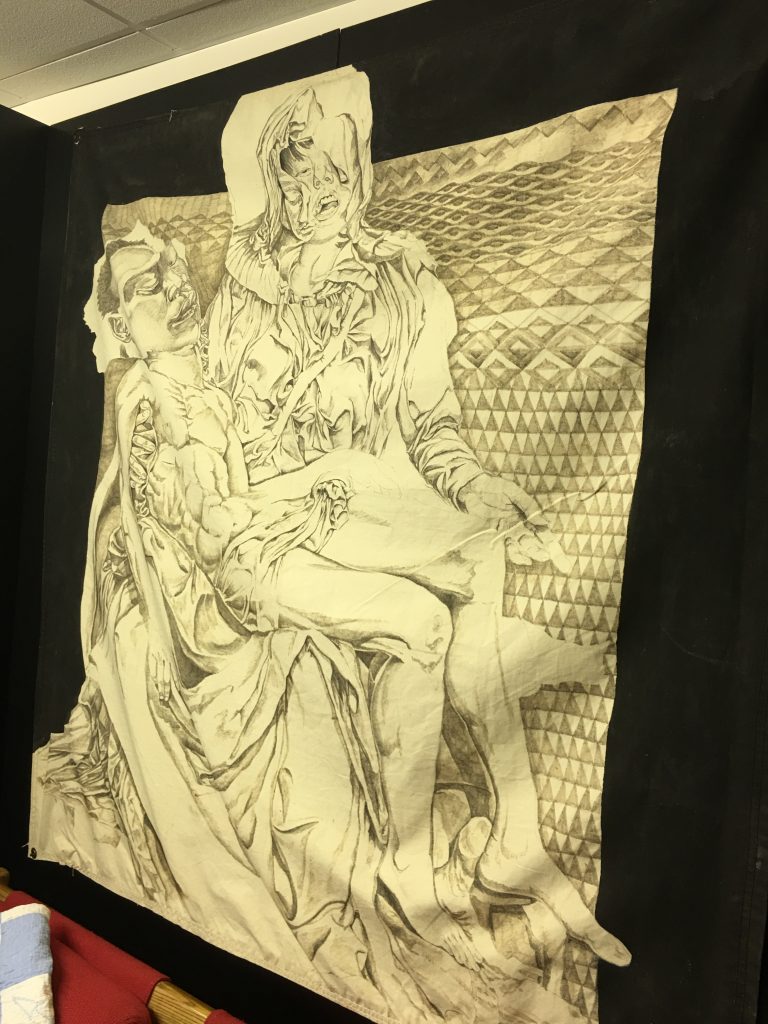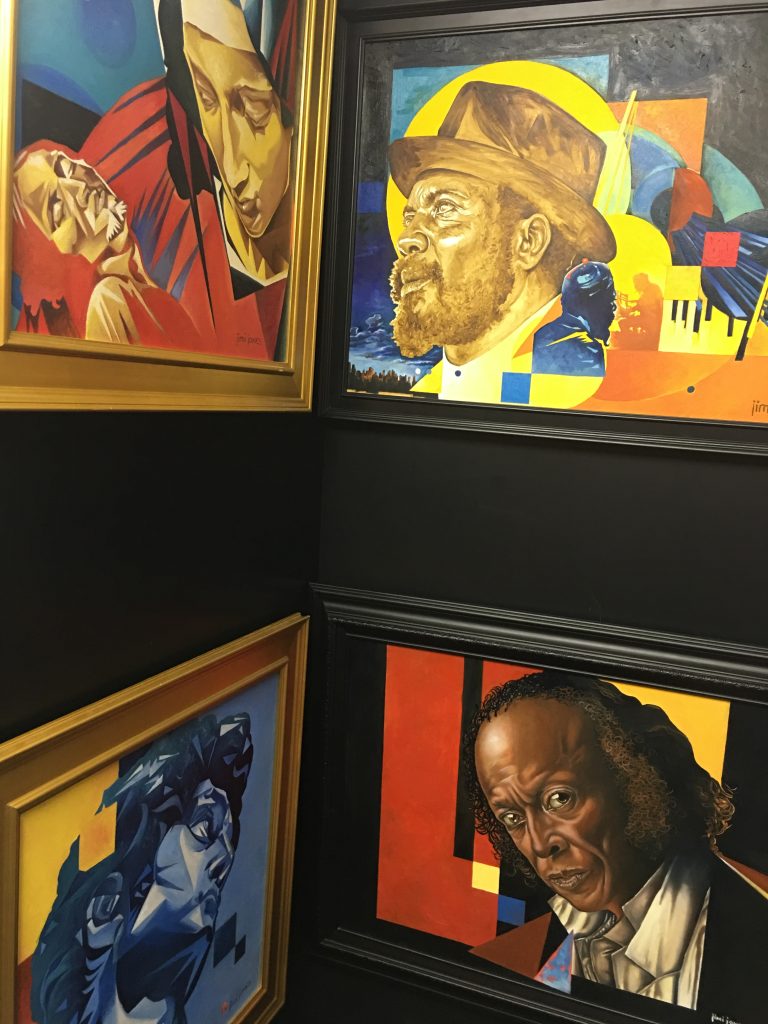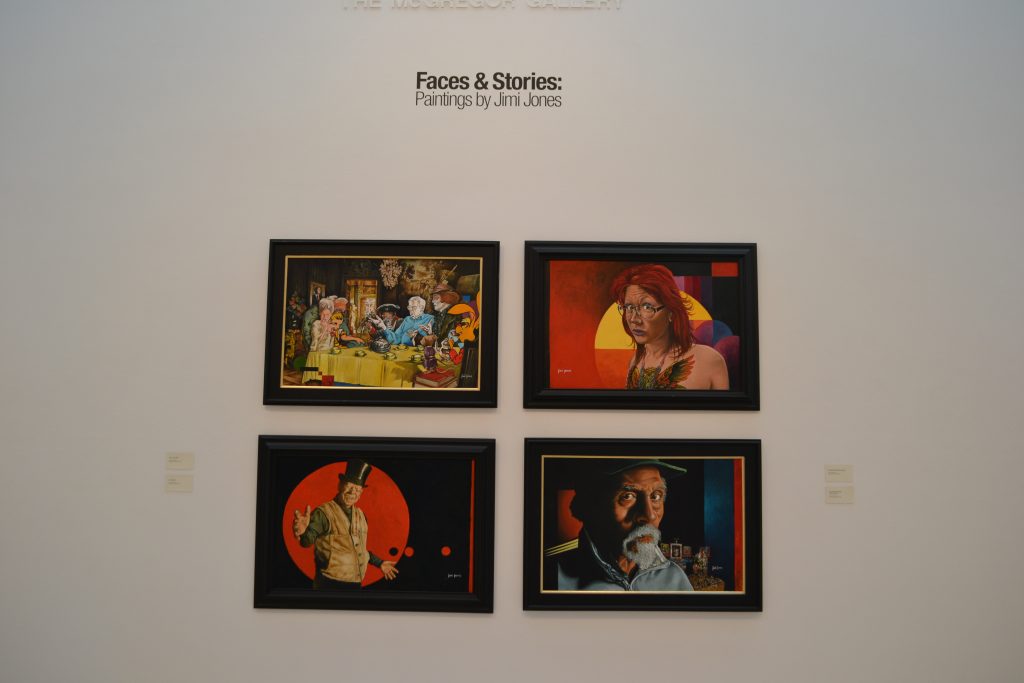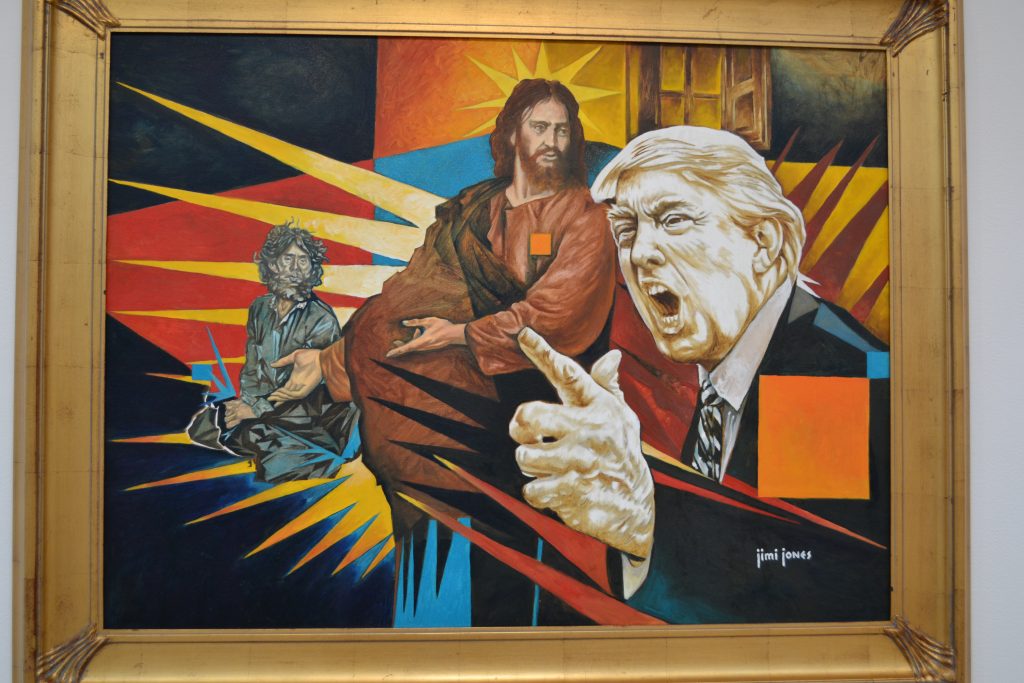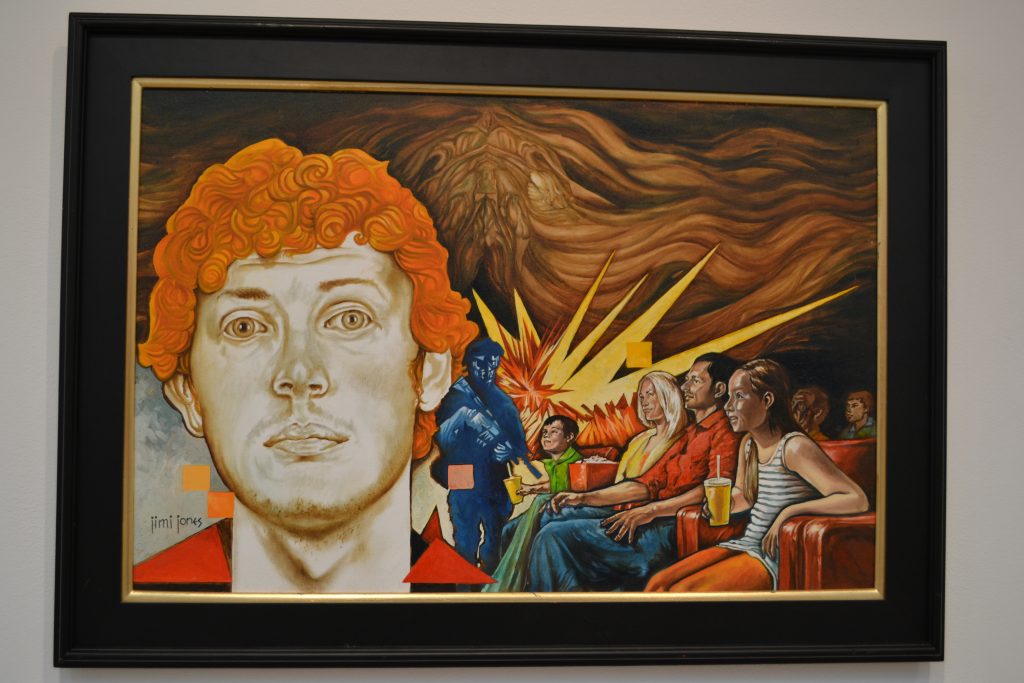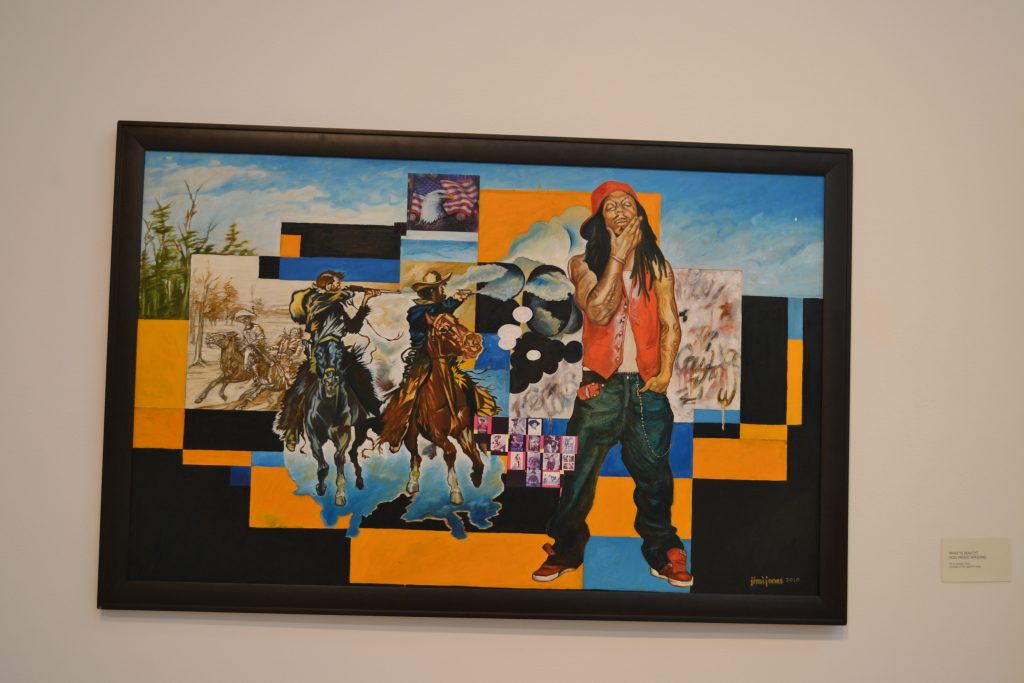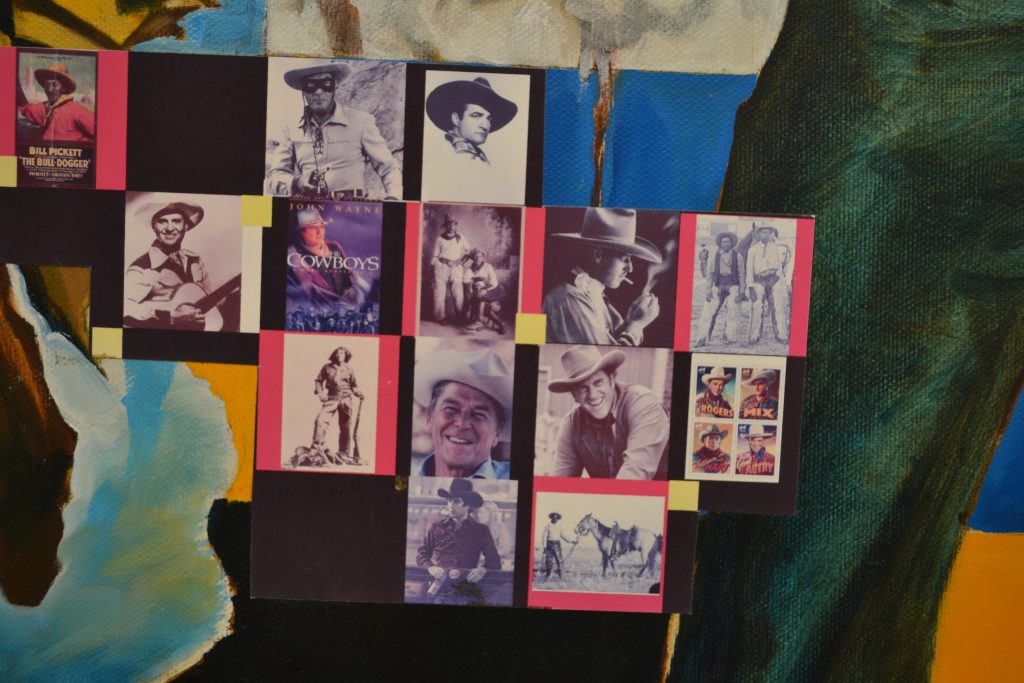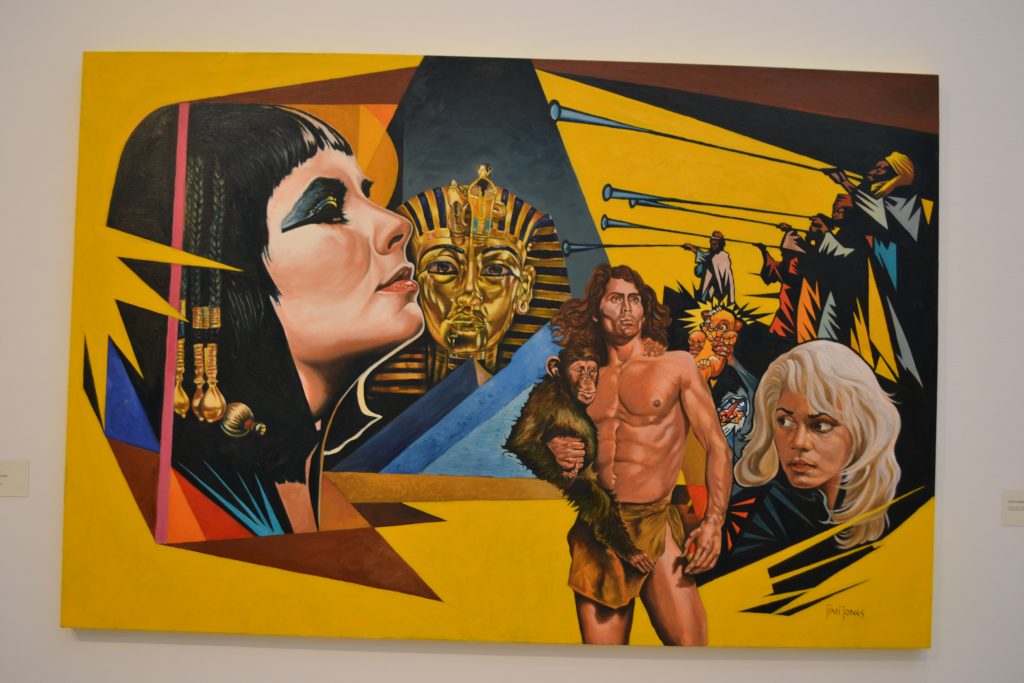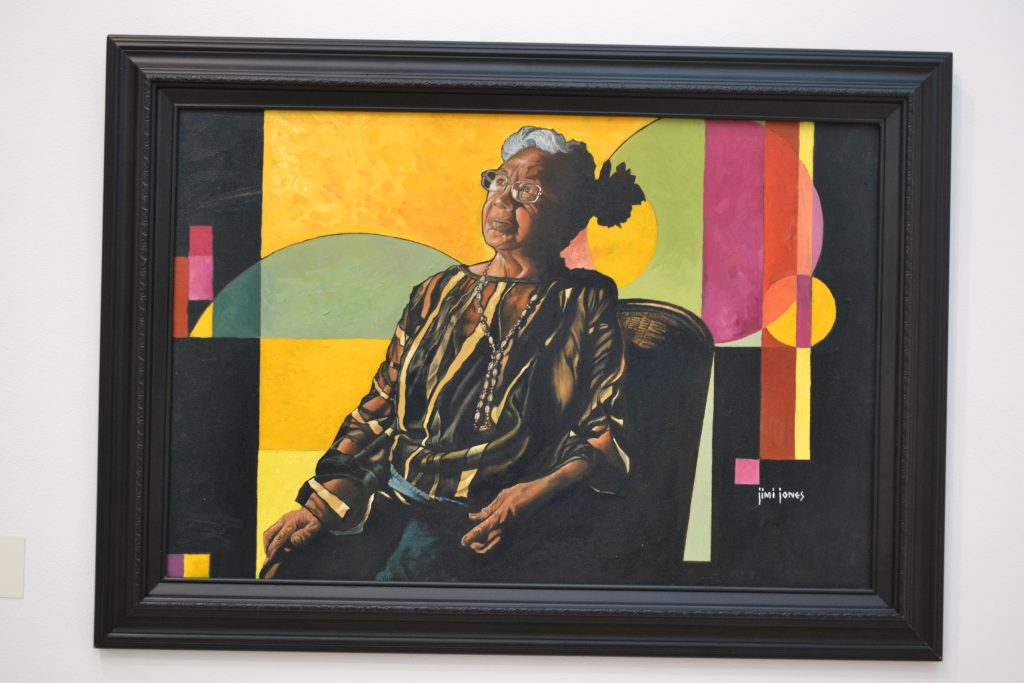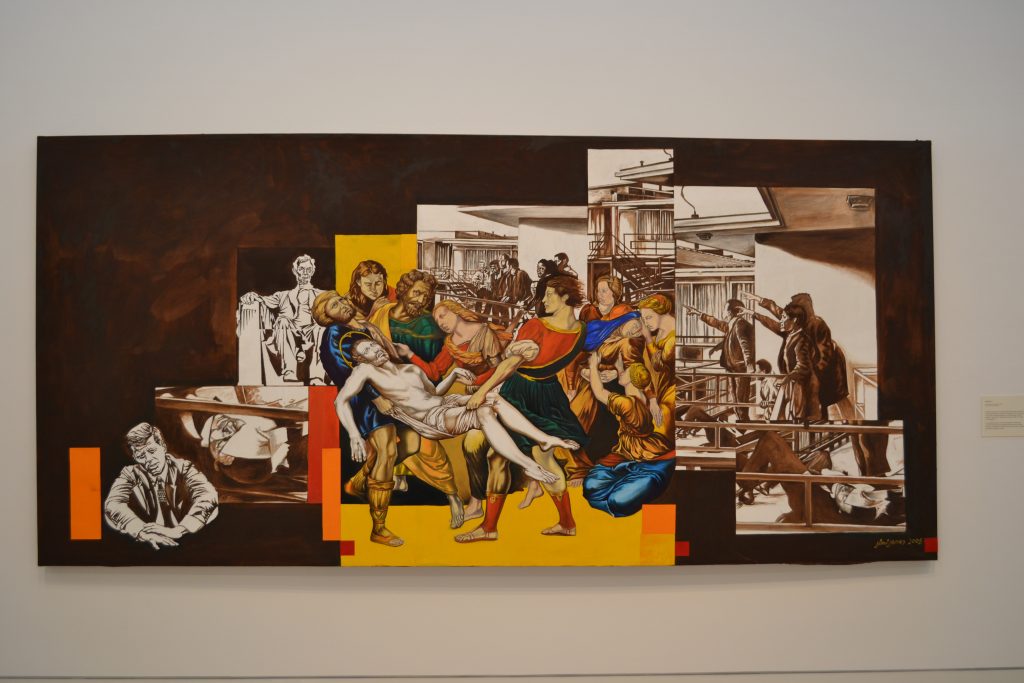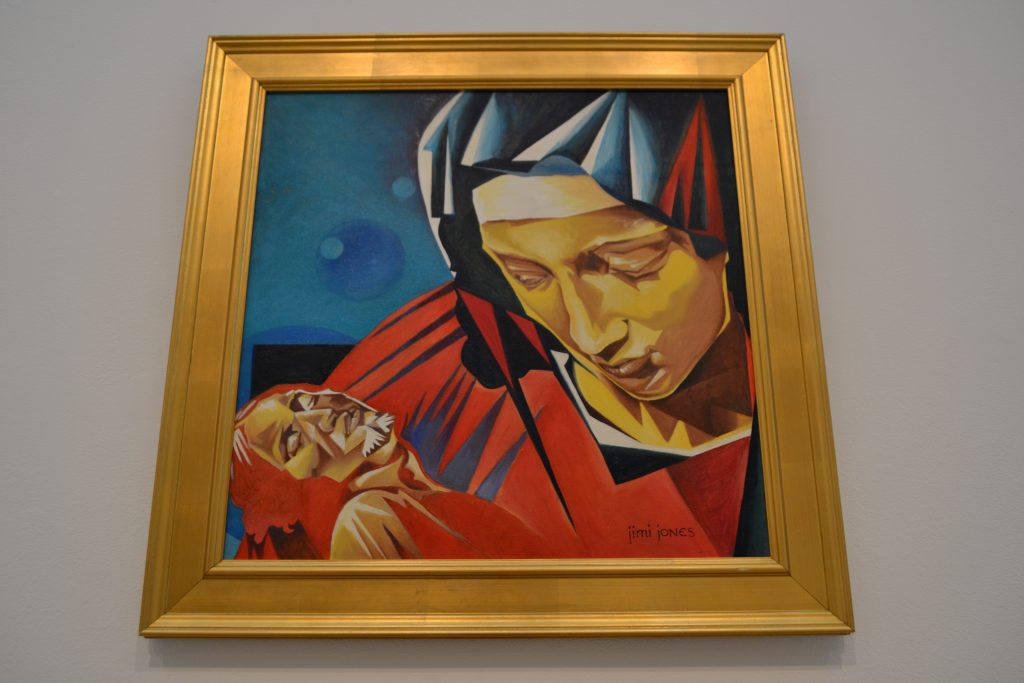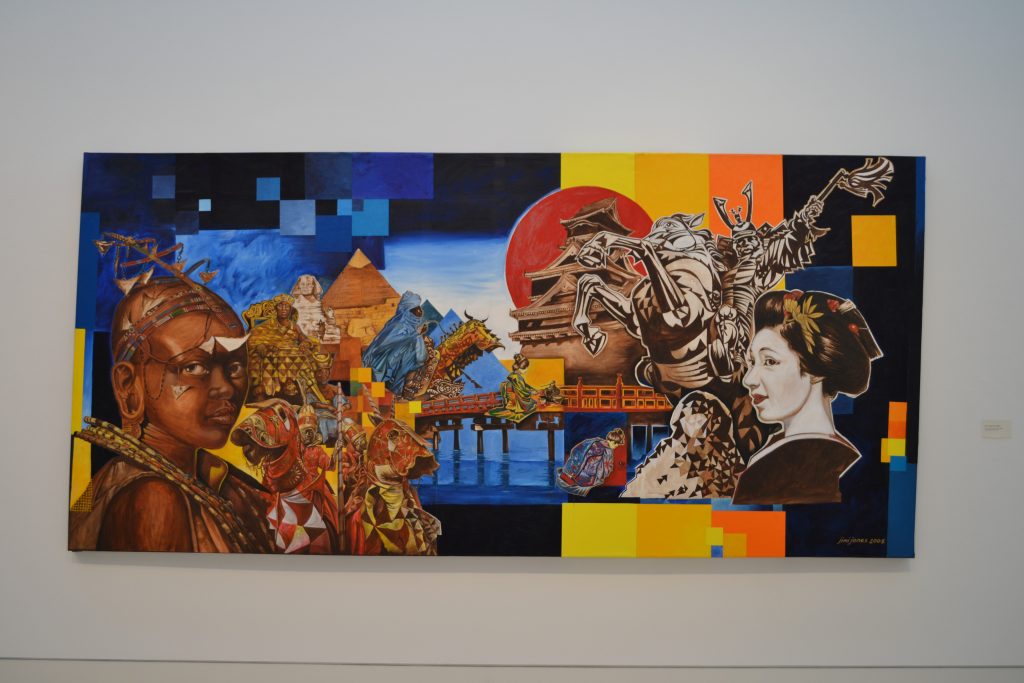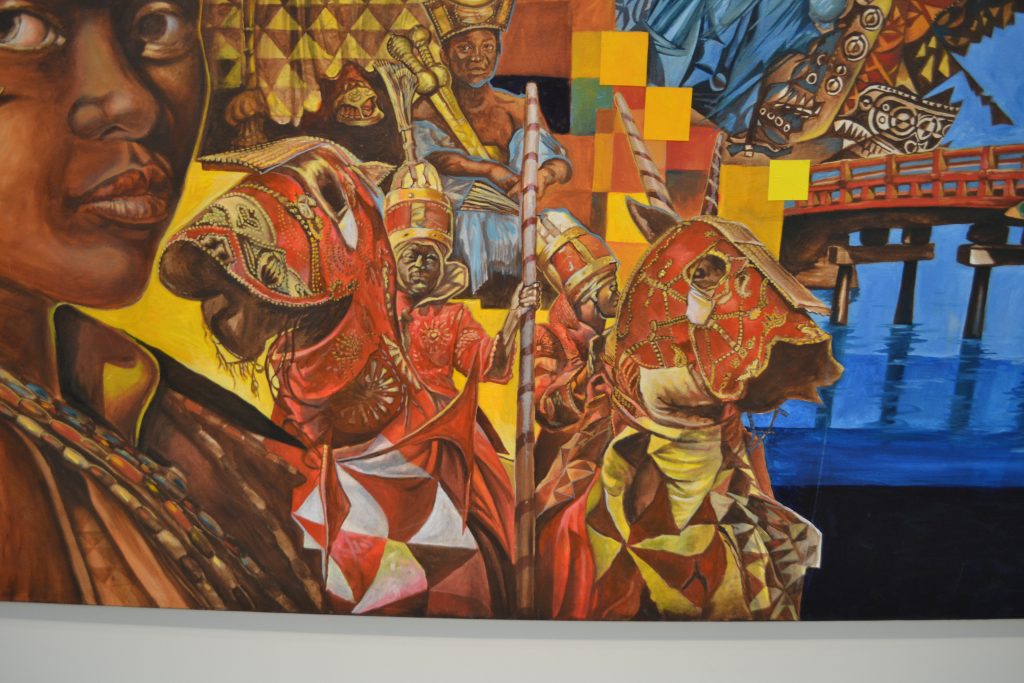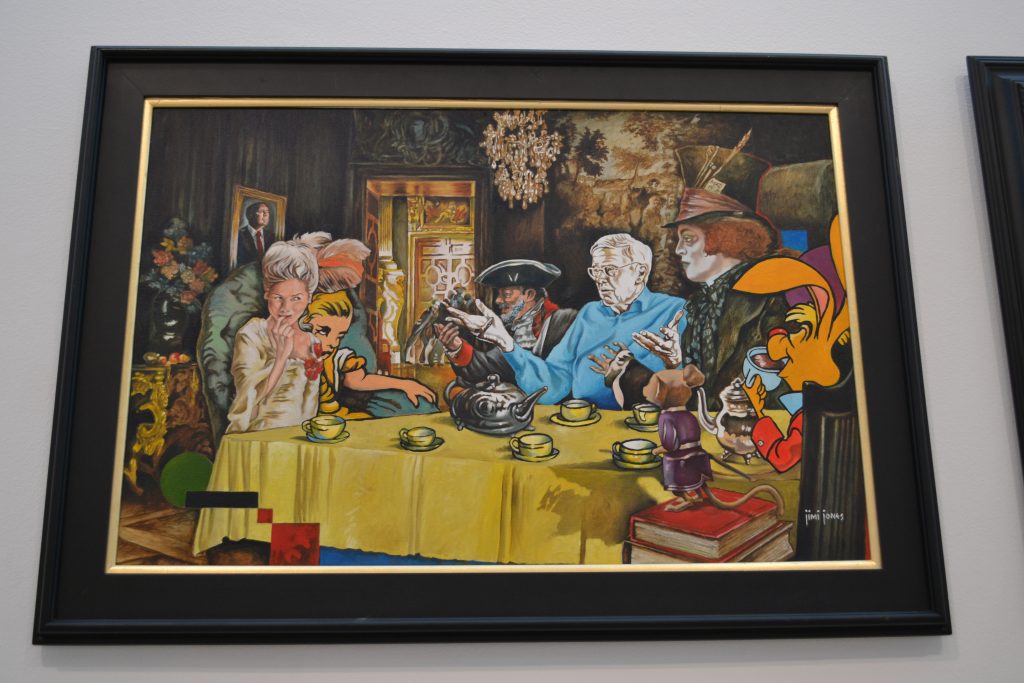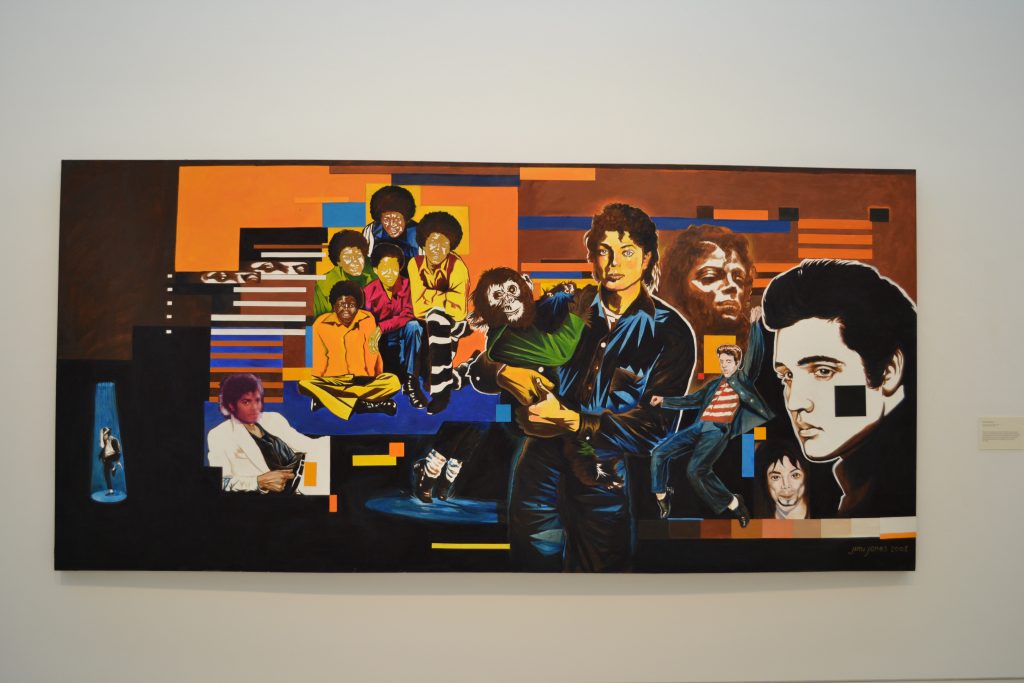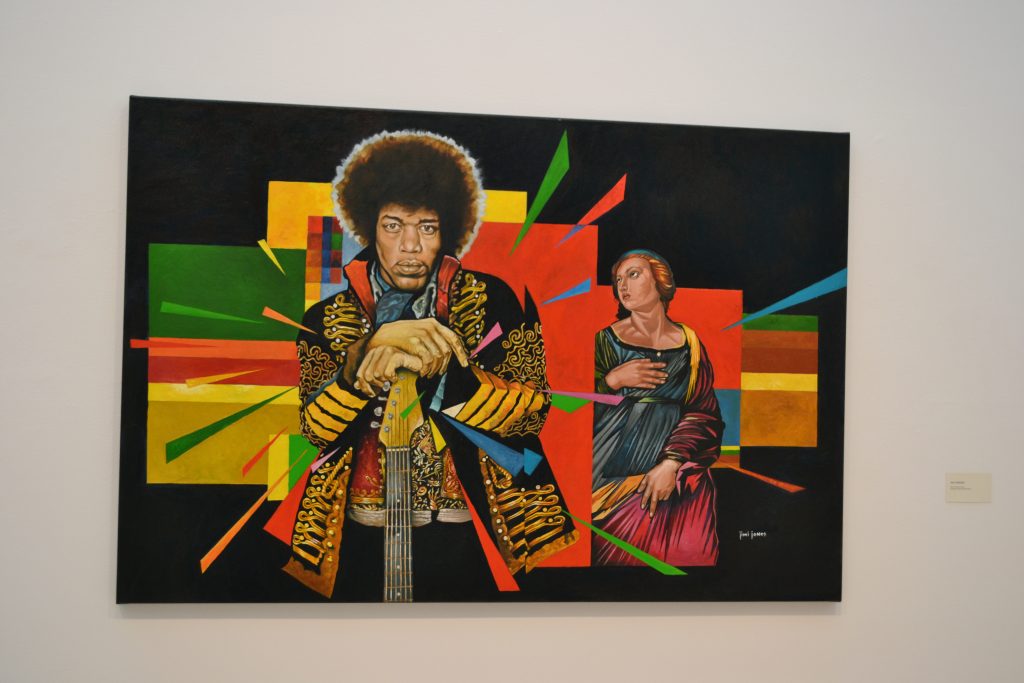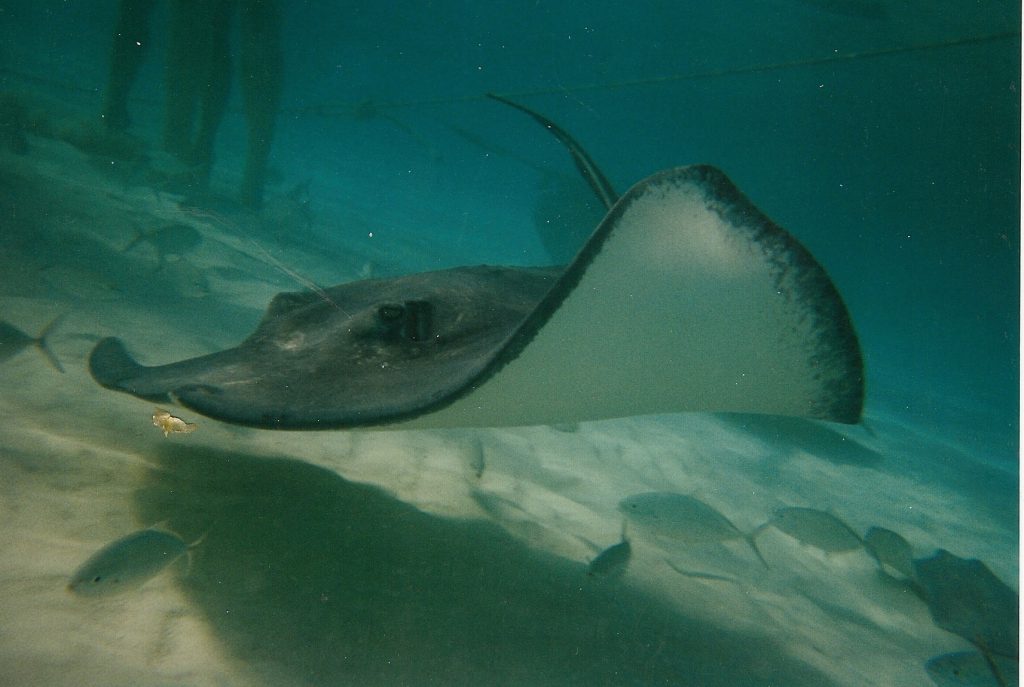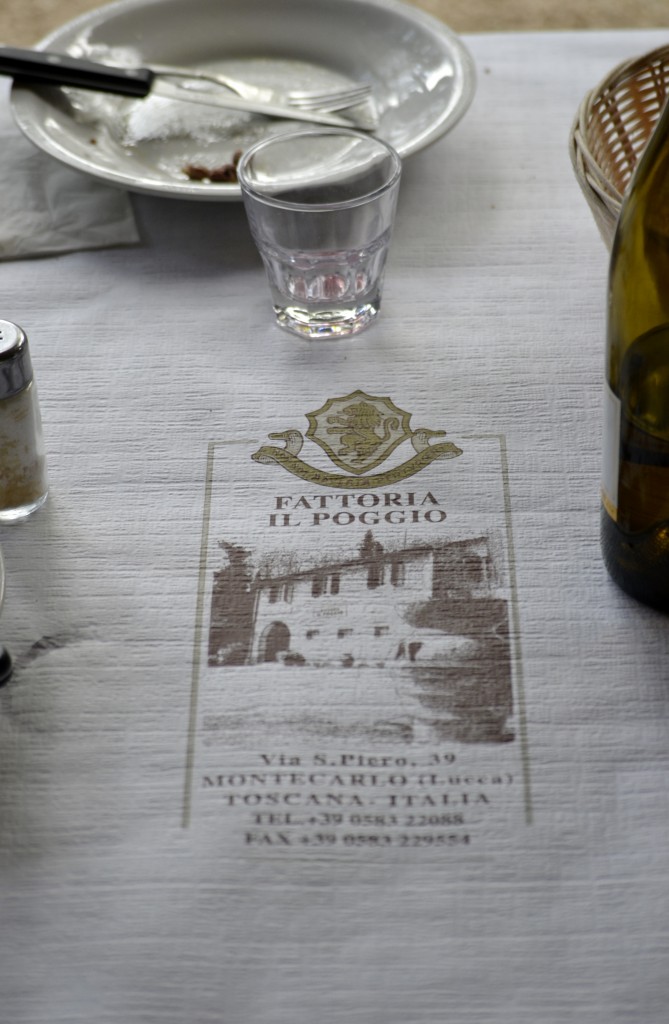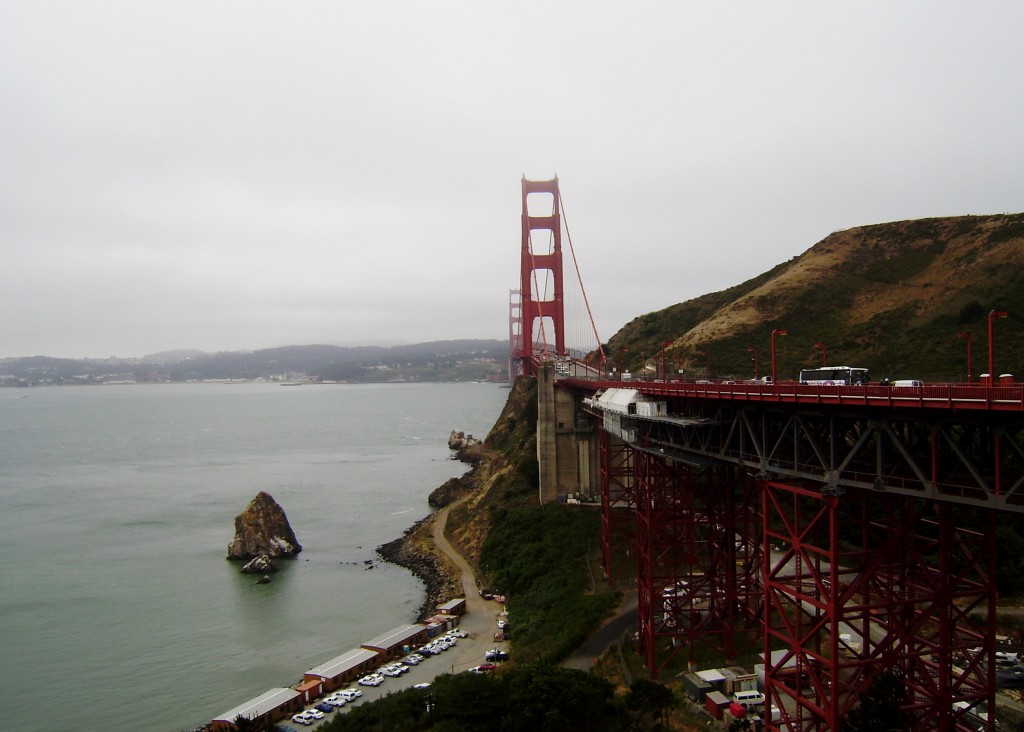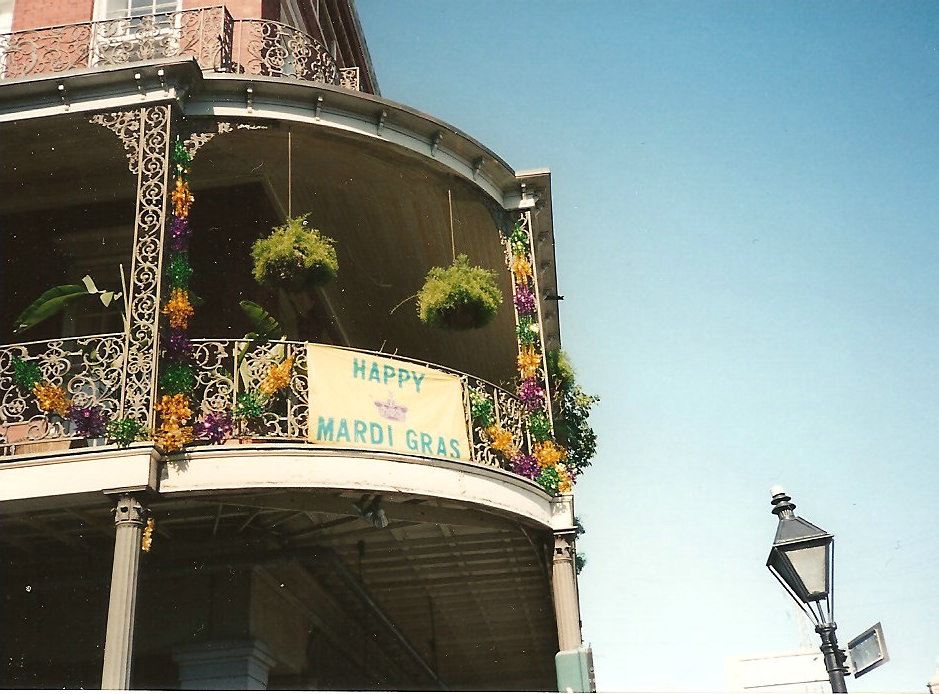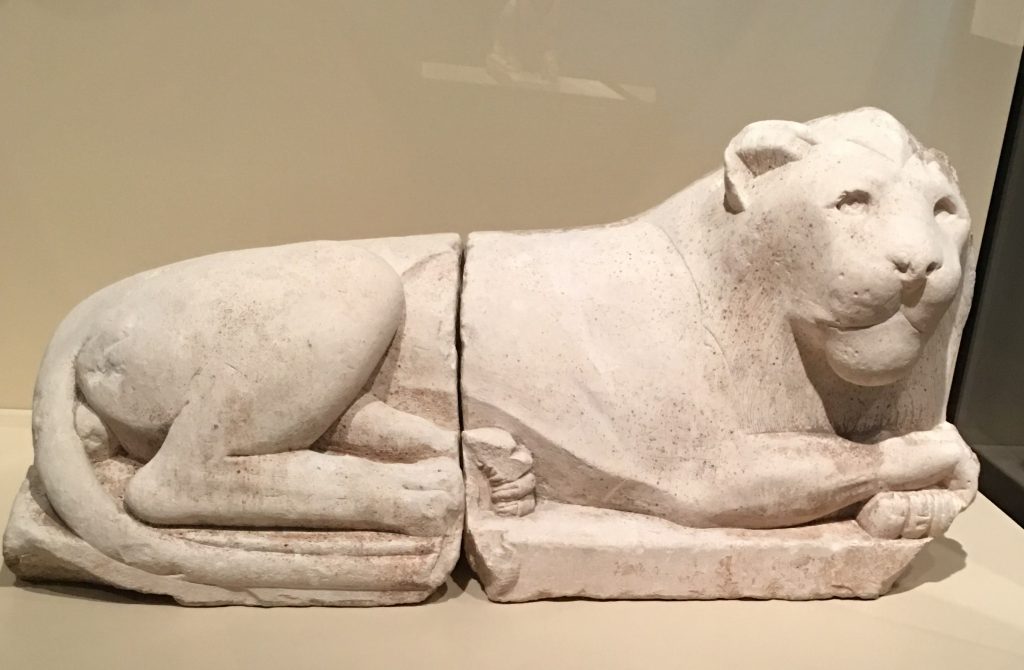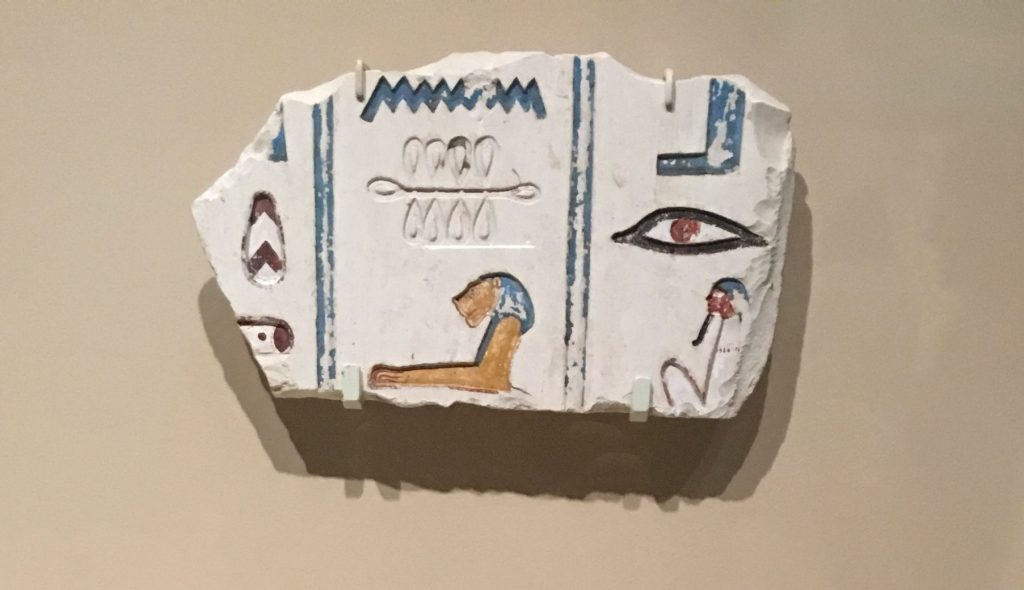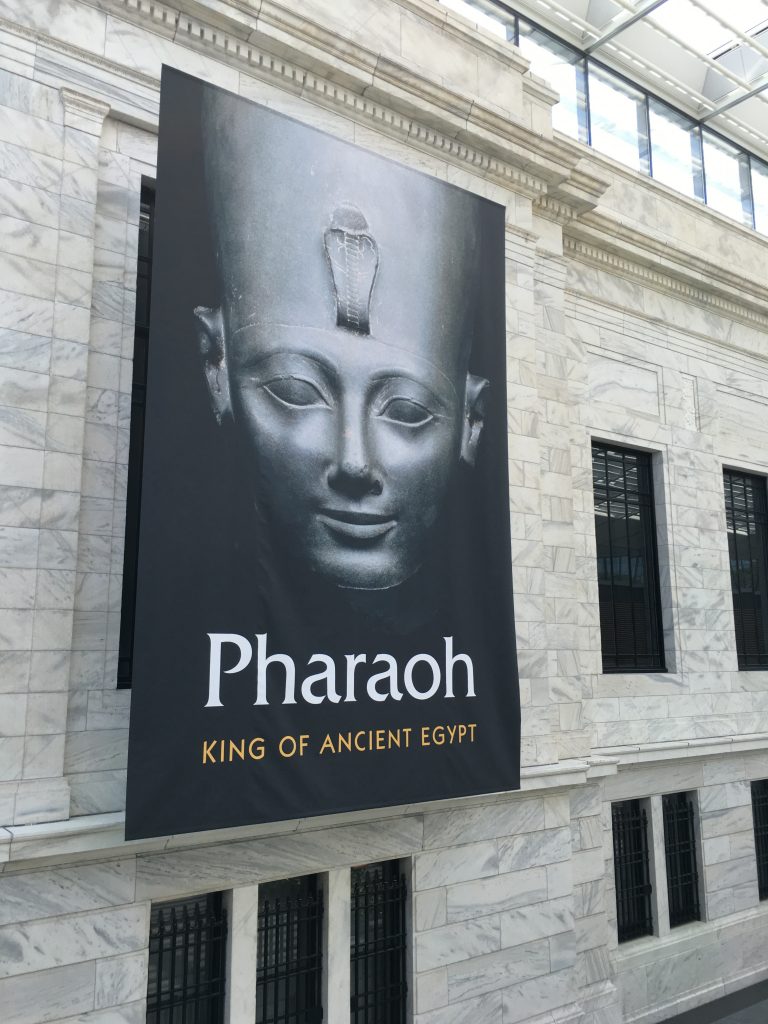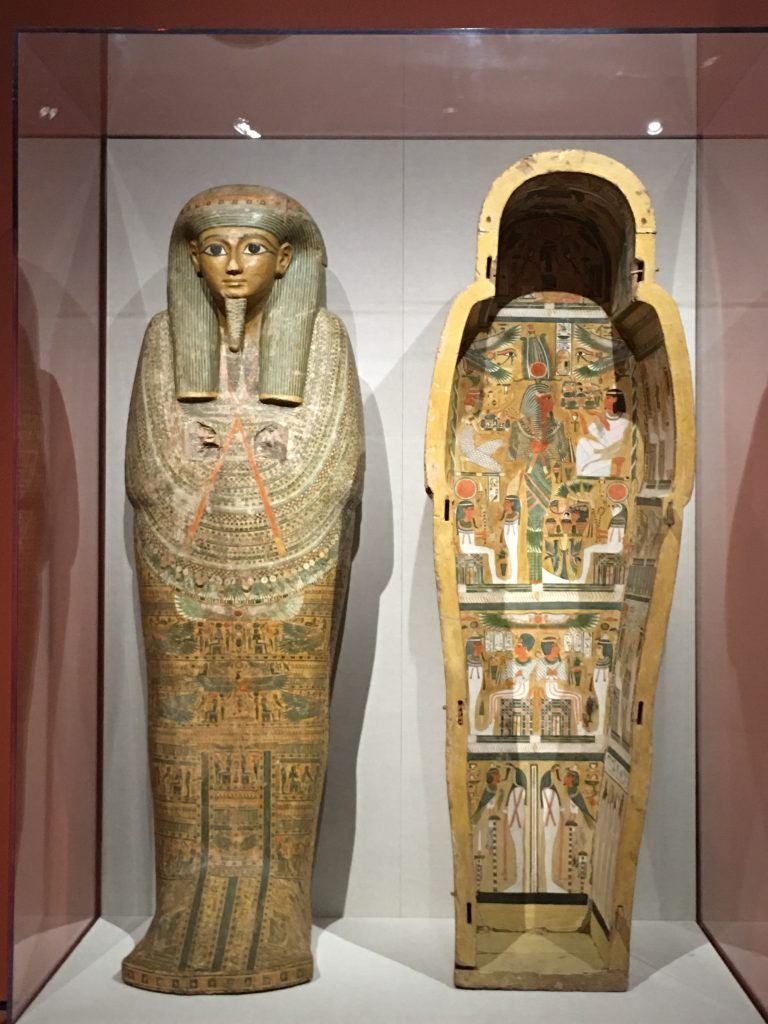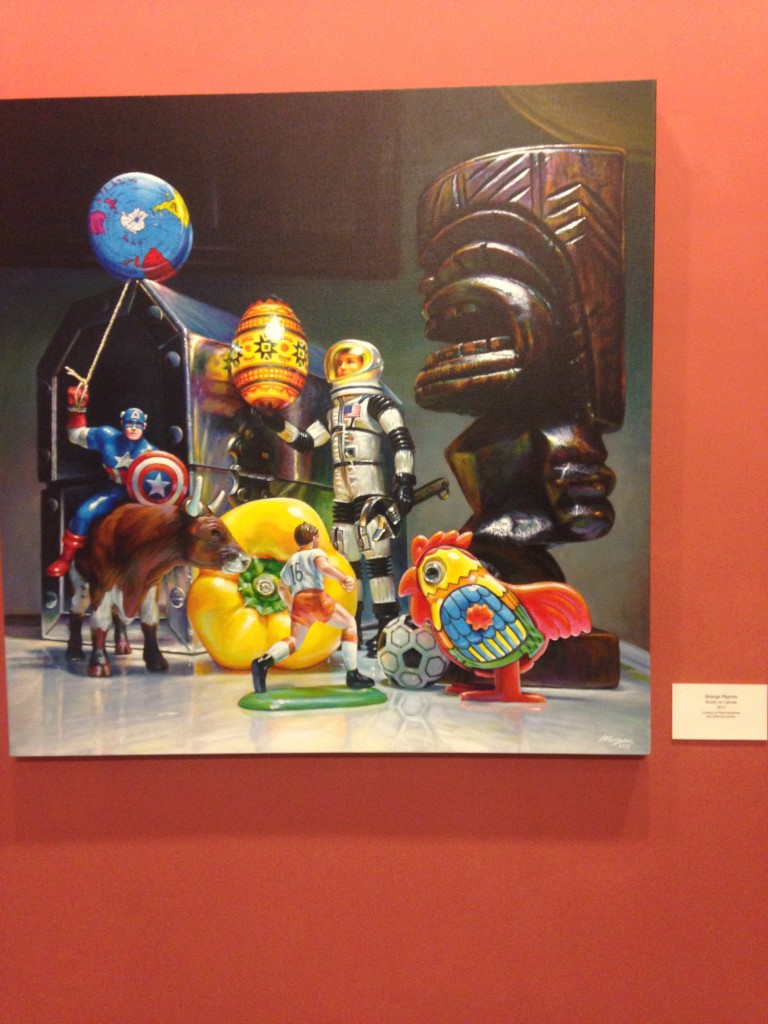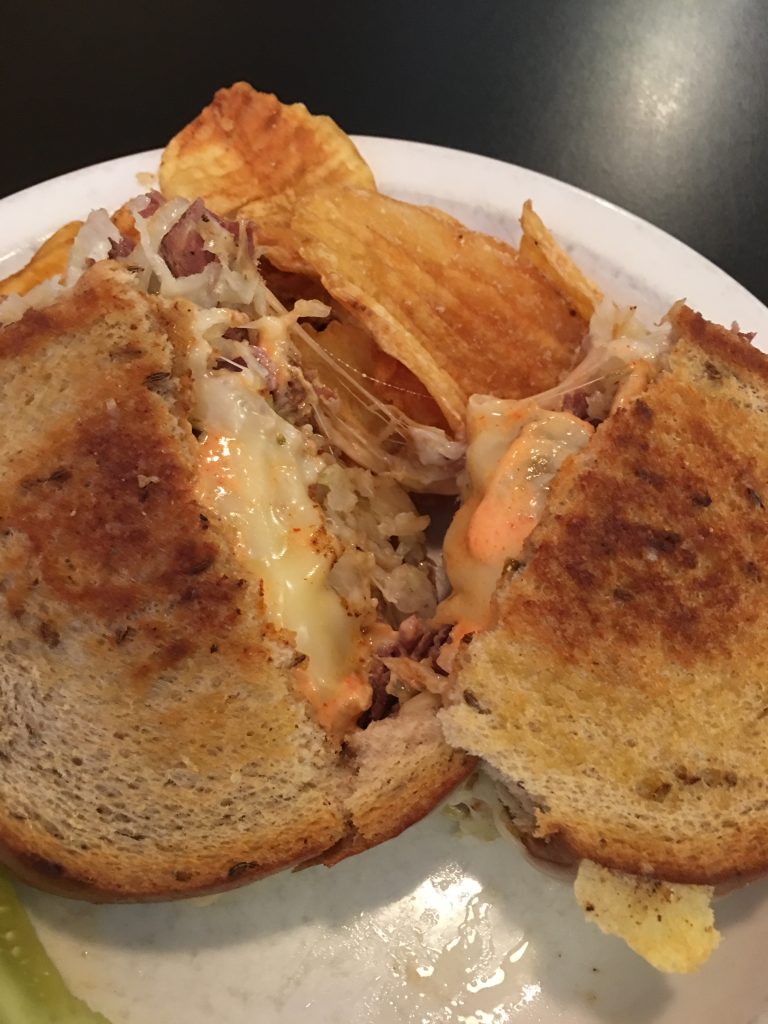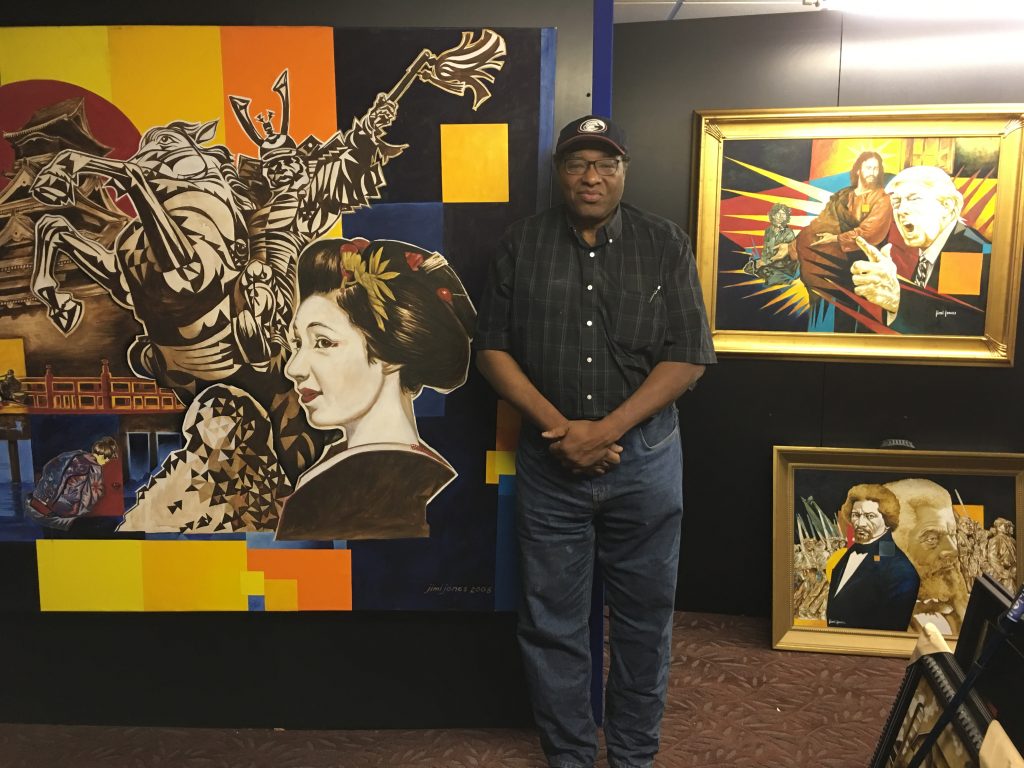
Interviewing Jimi Jones was, for me, the opportunity of a lifetime. I admired his latest collection at The Springfield Museum of Art in Ohio where he was the headline exhibitor at this Smithsonian-affiliated institution.
Arriving at Jimi’s studio in downtown Cincinnati, I was a bit jittery with excitement as this was not only my first interview, but a chance meeting with an artist I admired. Having recently written my amateur, artistic review of his work, I was more than elated when he contacted me through my website and suggested I meet him in person to weigh in on my thoughts. I had so many questions to ask him and looked forward to this opportunity.
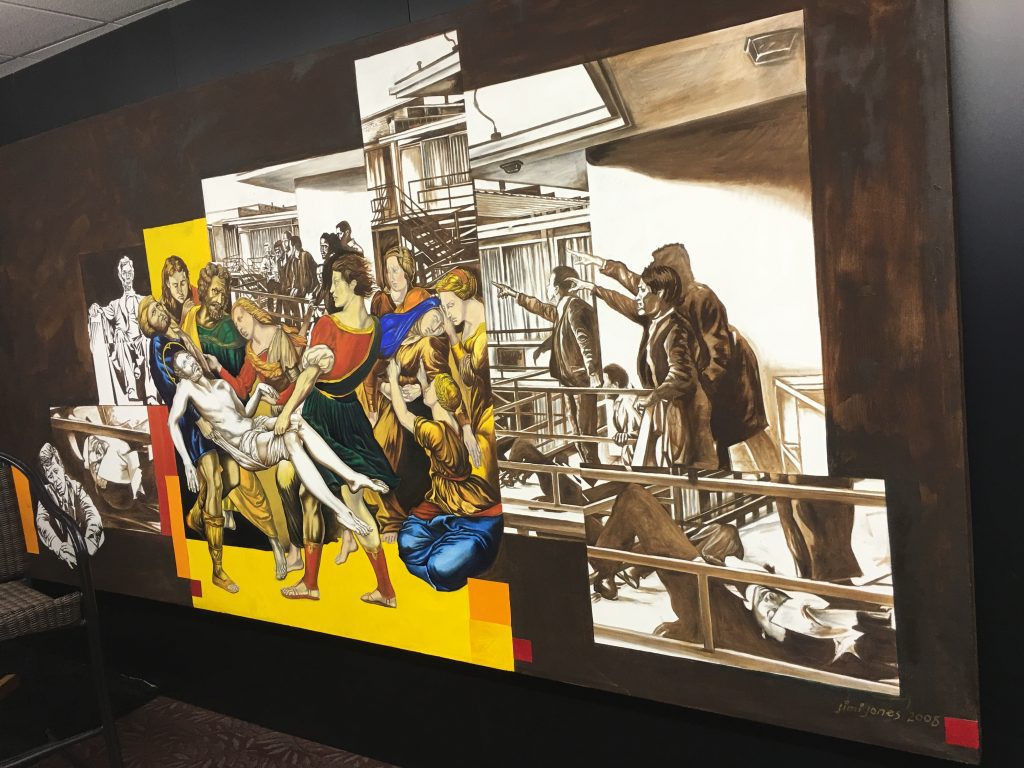
Jimi Jones has mastered the ability to tell a story through his paintings. His artistry evokes thought-provoking debates and cleverly captivates the mind of his audience. The masterpieces that have been majestically displayed at numerous museums represent all aspects of human culture to include history, politics, philosophy and religion.
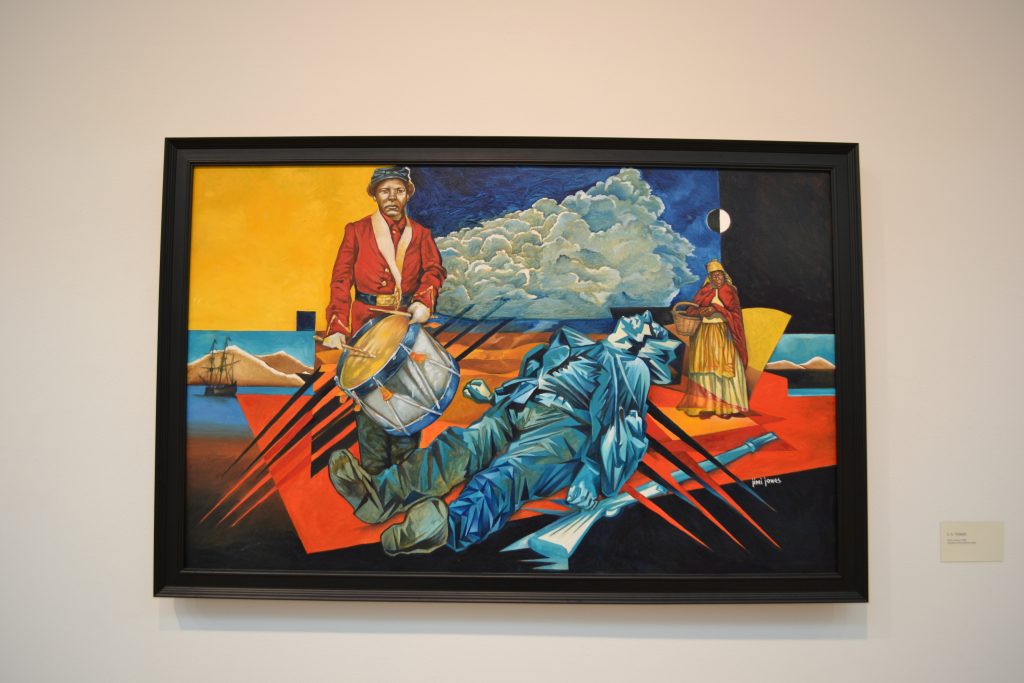
Providing his audience with a glimpse of history, Jones’ first painting on display at his Faces & Places exhibit was the “SS Turner”. Artist JMW Turner, with the ambition of making a political statement, painted his macabre work of art based on the horrific fate of the slave ship, Zong. It was his hope that it would encourage Britain to change its current pro-slavery beliefs. Taking inspiration from Turner’s historical art work titled “The Slave Ship”, Jones has also shown his passion for modern day public opinion, political issues and ethical concerns.
Jimi Jones’ ethereal “SS Turner” is also an anti-slavery piece, yet centered around the Civil War Era. Jones admired Turner’s powerful approach in exhibiting his view on the current politics of the day. It is through his paintings that Jones has found his calling in displaying his position in a subtle way that invokes both contemplation and conversation. It is his hope that he can create a masterpiece that “will make a difference [in one’s life] or even change a country’s thoughts.”
I felt privileged that Jimi would grant me the insight into the thought process of his artistic prowess. His art is thoroughly planned and deliberate long before he takes his first stroke upon the canvas. Studying “The Slave Ship”, he explained how selecting the color red for the soldier’s jacket represented bloodshed and that the ghostly blue was perfect for symbolizing death. I felt the intensity of pain through the graphic, diagonal lines as the slave ship lingered in the distance, while the innocence of the slave woman in the background tugged at my heartstrings. It was because of this painting, I wanted to learn more.
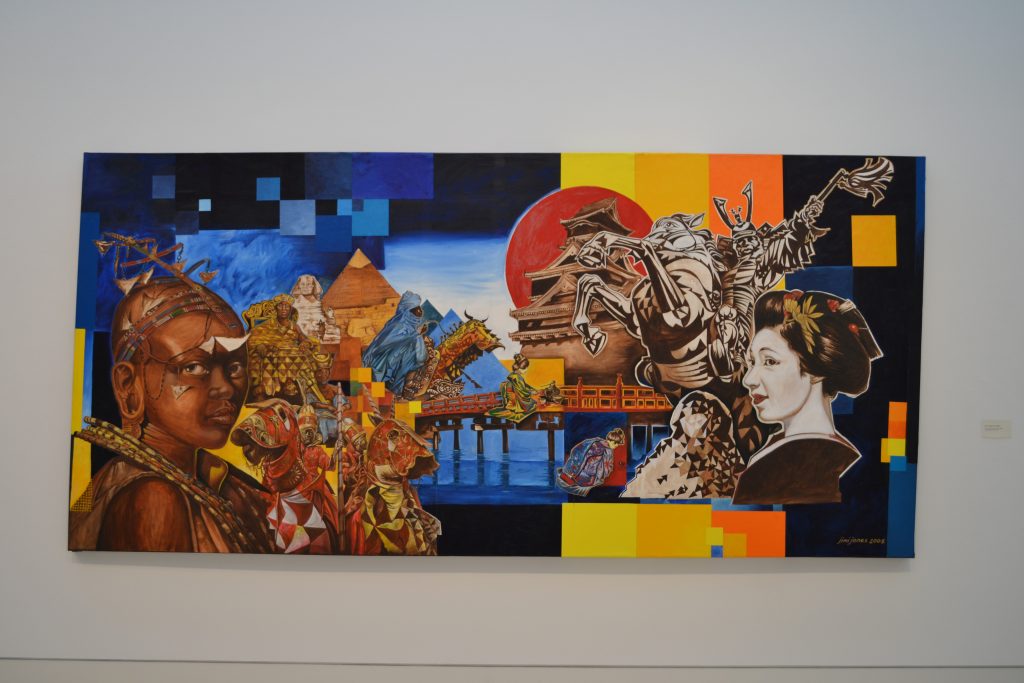
One of the most fascinating pieces of Jimi Jones’ exhibit was titled “Why These Cultures”. At first glance, I desperately wanted to understand the connection between the young African girl to the left of the painting and the Geisha girl towards the right. “Why These Cultures” perfectly exemplifies the societal differences between the Eastern and Western cultures, but how can they relate to one another?
As I studied the layers of complexity to this painting, I found myself more and more drawn to the intricate detail that only establishes Jones as one of the greatest artists of our time. His defined use of sepia and pression blue are hypnotizing, but the colorful elements of the costumed horses and the facial expressions of their riders are astonishing. I am afraid that if I stare too long or too closely, the characters will convince me to make their acquaintance. A quick jump into the painting and my life would be forever changed as my destiny would be decided between the cultures of the East or the traditions of the West.
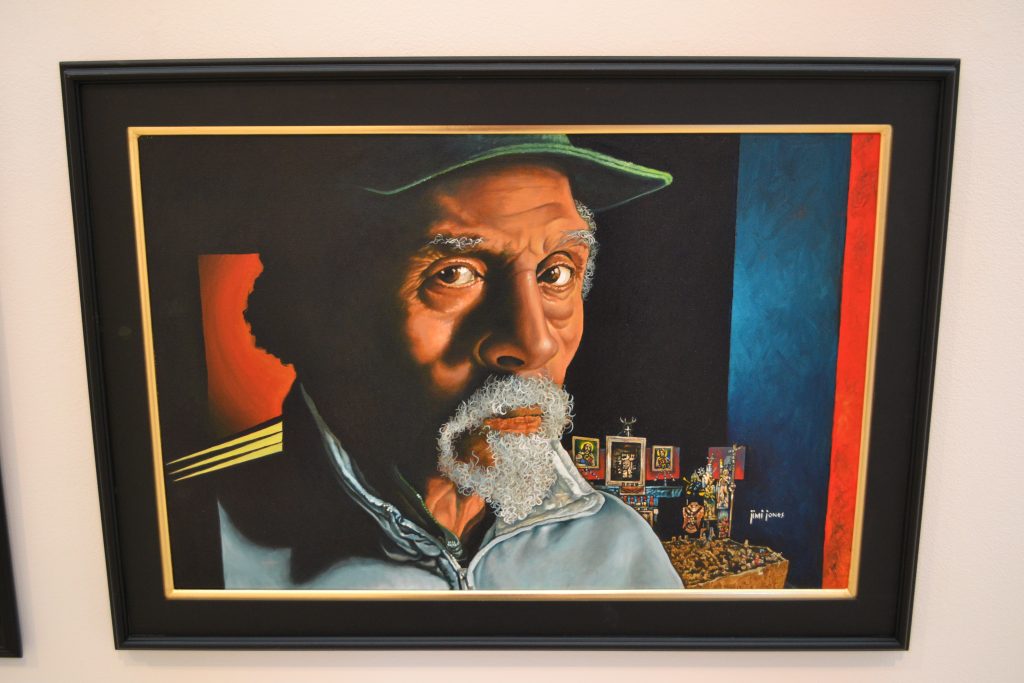
Jimi Jones is a self-proclaimed Renaissance man and one of his favorite, artistic legends is Rembrandt. While many artists included their likenesses in their paintings or commission their own portraits, I found it interesting that Jones would paint a collection of friends and acquaintances to establish his own portraiture. It is a fascinating thought as he explains that “We are a reflection of the people we knew and the people that supported us.” We take on their habits, are influenced or challenged by their beliefs and model their behavior to make us who we are today.
One of Jones’ supporters and fellow artist is Thom Phelps. They came together to collaborate on an ideal that led them to the philosophy of “Neo Ancestralism”. Other influencers in his life include Carl Solway, Owen Findson, Aiden Sims, Catherine Marie Klenke, Courtney Hellebuyck who were honored in his 2016 Faces & Stories Exhibit. What a beautiful homage to the people that Jimi holds in high regard and credits for making the artist, storyteller, political influencer, historian and man he is today.
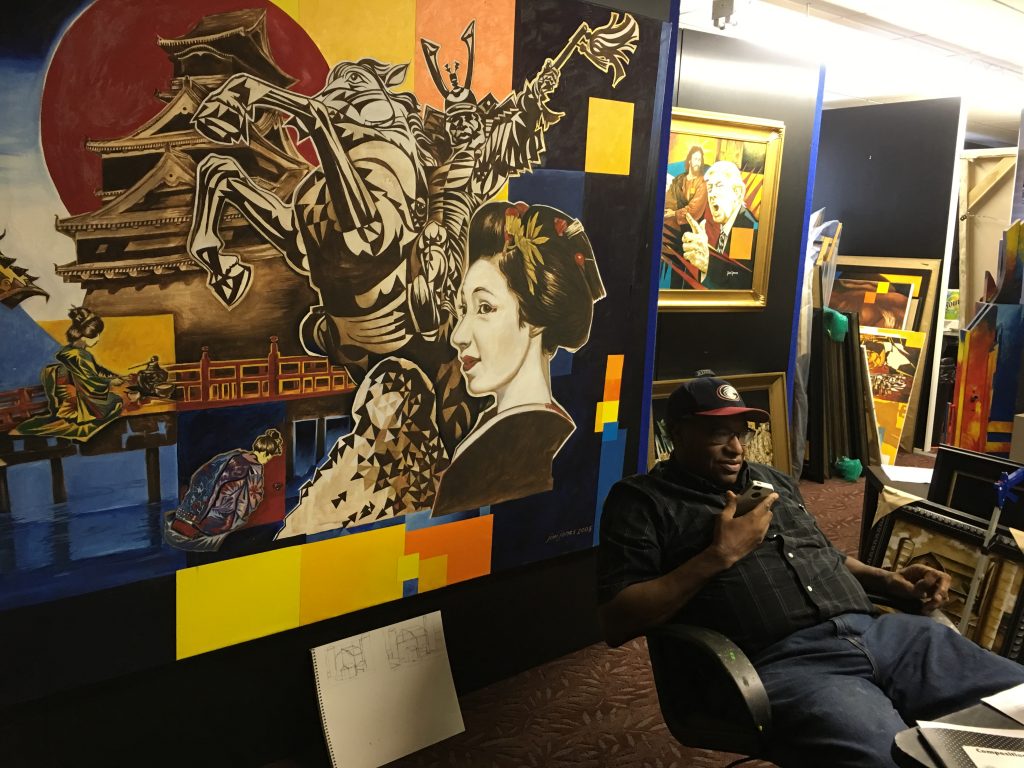
There are so many layers to Jimi Jones and the depth of his thoughts and processes make him bottomless, profound and all the more interesting. While his artwork is the result of years and years of painting, it is also a manifestation of his life experiences. A successful career in graphic design that provided him the ability to travel the world and an early passion for art, have laid the groundwork for Jones’ success and the foundation for continued greatness in the future. I anxiously await his next collection and anticipate the opportunity to be inspired, moved and encouraged to discover more.
Have you had the opportunity to see the artwork of Jimi Jones? Check out this link for samples of his exhibition pieces: http://jimijonesart.com/exhibitions/martyrs.html. I would love to hear about your thoughts and artistic opinions if you would kindly leave a message in the comments section below! Many thanks for reading about my experience learning more about Jimi Jones and his fabulous artwork,
I would like to extend a heartfelt thank you to Jimi Jones for sitting down with me to discuss his amazing artwork!
Disclosure: Please refer to our blog disclaimer tab for more information.
